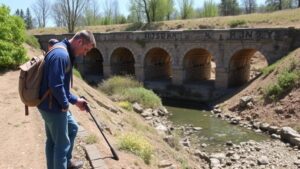Using Light and Shadow Patterns to Identify Potential Trip Mechanisms
Using Light and Shadow Patterns to Identify Potential Trip Mechanisms
The interplay of light and shadow in various environments is pivotal for hazard assessment and risk management in various fields, including architecture, civil engineering, and safety management. Understanding how these visual cues can indicate potential trip mechanisms is essential for creating safer spaces in both public and private domains.
The Importance of Light and Shadow in Hazard Identification
Light and shadow not only create aesthetic values in designed spaces but also serve functional purposes regarding safety. Buildings, walkways, and public areas require careful examination of how light falls and how shadows are cast. Poor lighting can mask potential hazards, while effective shadow patterns can highlight irregularities on surfaces which may lead to trips or falls.
- The American National Standards Institute (ANSI) recommends specific lighting levels for various types of spaces to minimize risk.
- According to the National Safety Council, falls accounted for over 29% of non-fatal injuries in 2019, highlighting the need for effective risk mitigation strategies.
Understanding Trip Mechanisms
Trip mechanisms refer to the specific conditions or elements in an environment that may cause an individual to lose balance and fall. These can include structural irregularities, such as uneven surfaces, protruding objects, or changes in elevation. Identifying these mechanisms early through the analysis of light and shadow can significantly mitigate the risk of accidents.
Analyzing Light Patterns
Light patterns are affected by ambient conditions, the design of structures, and the time of day. To effectively evaluate potential trip hazards, consider the following:
- Time of Day: Early morning and late afternoon produce long shadows which can accentuate surface irregularities, making them more noticeable.
- Angle of Incidence: Natural light from windows or overhead lights can create glare, obscuring trip hazards on otherwise even surfaces.
For example, an architectural study revealed that pathways designed with slight inclines become more pronounced during sunset, which can lead to falls if not adequately illuminated or marked.
Examining Shadow Patterns
Shadows can reveal a lot about the surfaces we walk on. For example, the length, orientation, and clarity of shadows can help identify risks associated with:
- Uneven Pavement: Shadows that create fluctuating depths can signal uneven surfaces that are difficult to navigate.
- Obstructions: Properly illuminated areas can bring to light objects–such as curbs or decorative elements–that may become obscured in shadow.
A case study conducted in urban settings demonstrated that areas with well-defined shadows led to a 15% reduction in trips and falls, primarily because pedestrians could better see the ground conditions ahead of them.
Practical Applications
Incorporating an understanding of light and shadow patterns into hazard assessments can significantly enhance safety measures. Practical applications include:
- Design Considerations: Architects can integrate materials and designs that maximize light while minimizing shadowed areas in high-traffic zones.
- Regular Assessments: Establishing routine walkthroughs during different times of day to assess potential hazards based on light and shadow changes.
- Lighting Strategies: Installing lights that are adjustable to change the angle or intensity, effectively reducing glare and enhancing visibility in shadowed areas.
Conclusion and Actionable Takeaways
Using light and shadow patterns to identify potential trip mechanisms is not only a design consideration but a safety imperative. By recognizing how these elements interact with the environment, stakeholders can better inform design practices and risk management strategies to reduce accidents effectively. Moving forward, consider the following actionable steps:
- Conduct routine assessments of high-traffic areas, analyzing light and shadow effects at different times of the day.
- Collaborate with lighting designers and engineers to create spaces that minimize the risk of falls through integrated lighting solutions.
- Educate users about the potential trip mechanisms in their environments, providing guidelines for safe movement through shadow-prone areas.
By embracing the relationship between light, shadow, and trip hazards, stakeholders can create environments that are not just functional but also safe for all users.


